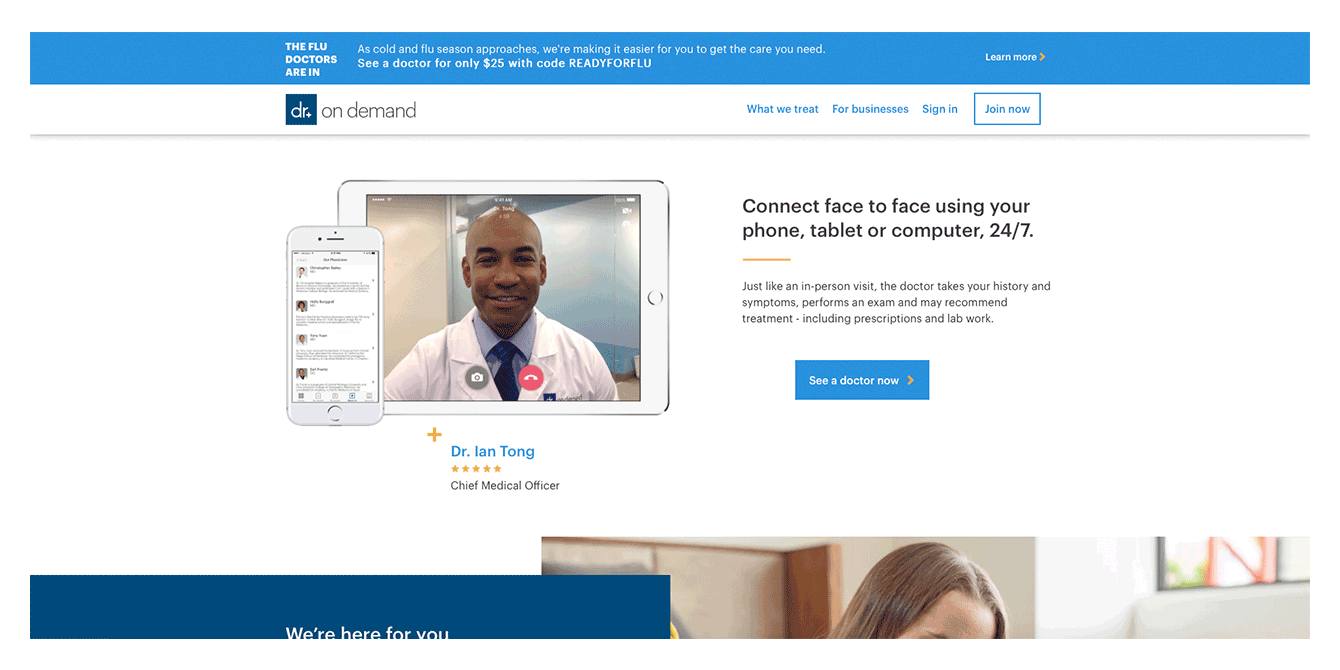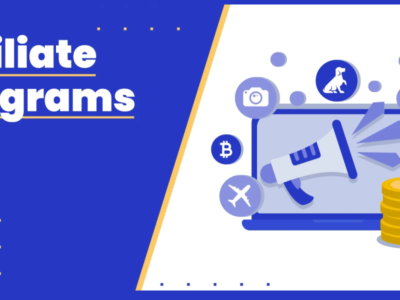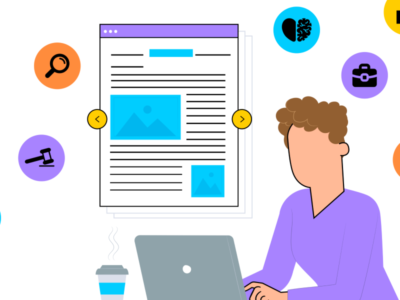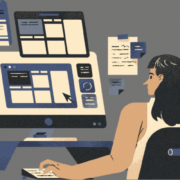Types of On-Demand Delivery Apps
Do you want pizza delivered to your doorstep? Or maybe a bottle of wine? Or maybe some healthy meals designed by nutritionists? There’s an app for that! Lots of people enjoy the possibilities that on demand delivery companies offer. From food delivery to laundry and home care services, dedicated on-demand delivery apps make our lives more convenient than ever.
Thank you for reading this post, don't forget to subscribe!Each year, more and more consumers are attracted by on-demand delivery apps. According to the US NTRST research carried out in November 2017, the use of on-demand services greatly increased from 2016 to 2017 — from 24.9 million customers in 2016 to 41.5 million in 2017. Total consumer spending on on-demand services reached $75.7 billion in 2017 versus $48.0 billion in 2016. The most popular categories of on-demand services identified in this research were online marketplace services, transportation, housing, and food delivery.

On-demand services are an integral part of modern life. Their benefit is obvious. They offer a win-win solution for providers and customers.
Having developed plenty of on-demand apps, SteelKiwi has fresh insights into their core advantages, use cases, and must-have features. Let’s take a closer look.
Major benefits of on-demand apps
On-demand delivery apps are of great benefit to their users because they’re:
Fast
An on-demand service provides consumers with a great opportunity to place orders in a flash. Searching, booking/scheduling, paying, and reviewing orders can be handled within one app. Simply tap a button and get what you need.
Cheap
Each on-demand delivery service has different prices and timing, so both business owners and customers can choose the service that fits their budget. From the customer’s perspective, on-demand apps offer hot deals and special promotions on a daily basis. Business owners can save money with these apps since they don’t have to invest in logistics, vehicles, and full-time couriers to deliver their products. On-demand services take care of it. The on-demand model is based mainly on independent contractors using their own means of transport. According to Bloomberg, this saves business owners a lot of money as there’s no need to pay payroll taxes, insurance, vacation time, sick days, and so on.
Convenient
The convenience of on-demand apps goes beyond delivery. Apps of this type are handy at every stage of service delivery , providing users with instant access to smart search, real-time tracking, suitable methods of payment, and convenient and quick delivery.
Transparent
Being transparent with customers contributes to establishing trust. To ensure transparency and build trust, on-demand delivery applications are fitted with feedback systems. Feedback systems also let providers discover gaps in their performance and fix them.
Types of on-demand delivery apps
Users of on-demand delivery apps
All on-demand delivery applications are intended for service providers and customers. For a service to work perfectly with these two user groups, on demand app developers often build separate applications for each of them.
In addition to providers and customers, gig economy workers make up a significant part of all on-demand app users. These workers are independent contractors (e.g. drivers, bicycle couriers) who work part-time and decide on their own work hours. Gig workers function as intermediaries between service providers and customers. The most common on-demand services they provide, according to the UK Department for Business, Energy and Industrial Strategy, are courier services, transportation, and food delivery. Many gig economy workers work for companies with high-demand services, such as Uber(18% of those who have been engaged in the gig economy work), PeoplePerHour(12%), Deliveroo(12%), and Fiverr(10%).
On-demand economy business models
Based on what users are involved in providing the service, on-demand applications can be divided into three types:
Enterprise to Person (E2P) / Business to Consumer (B2C)
B2C apps facilitate transactions of goods or services between providers and customers. McDelivery, Booking.com, and Starbucks are examples of B2C apps. The Starbucks app is an online self-service application that lets users skip the line by ordering and paying in advance or having their favorite coffee delivered right to the doorstep.
Enterprise to Enterprise (E2E) / Business to Business (B2B)
B2B apps are mobile solutions that created to connect businesses. These apps support transactions globally. Cargomatic, Eventio, and Catalantare good examples of B2B apps. Eventio, for example, is an on-demand app that helps businesses and individuals find venues for events at any level. The application provides its users with a list of available locations. Once a customer chooses a place, they can look for supplementary services such as security, catering, cleaning services, and DJs/bands. Invited guests or the general public can then purchase tickets via the app.
According to the nature of platform content, B2B apps can be divided into:
- Vertical ⇒ serving a single industry sector
- Horizontal ⇒ serving multiple industry sectors.
Person to Person (P2P) / Consumer to Consumer (C2C)
These apps enable platform users to exchange products or services. Customers can sell to or buy from other customers via a C2C app. In these apps, all users have the same rights and aren’t considered entrepreneurs. These kinds of applications are getting popular since they save money. Successful platforms that use this model include BlaBlaCar, eBay, and Etsy. BlaBlaCar, for instance, assists its users in finding co-travelers. Users can find or offer rides online by giving details on points of departure and arrival and travel dates. Once a ride seeker finds the perfect ride, they can book a seat and the driver gets their co-traveler’s contact information to arrange the details.
On-demand delivery use cases and examples
An on-demand delivery app is an excellent solution for local businesses. Despite the competition, an on-demand app is relevant for those who are starting a business as well as for those who are already on the market but don’t have an application. To better match market demand, you should consider the top industries involved in the on-demand economy.
Food
Having groceries or meals delivered anywhere and anytime is nothing new. The best food delivery apps include Uber Eats, Instacart, Grubhub, and Doordash. These meal delivery apps offer multiple benefits for both customers and restaurants. Restaurant owners get more orders and can manage them efficiently. Users, in turn, are provided with easy access to user-friendly menus.
Food industry is the major niche of the on-demand delivery market which offers many solutions including restaurant and grocery delivery app development, pizza delivery app development, and alcohol delivery app development services.

Speaking of food apps, we also need to mention Postmates. It’s quite different from the other platforms we’ve just mentioned. Postmates provides an app where you can order anything and get door-to-door delivery ranging from furniture delivery to milk delivery.
Healthcare
On-demand medical applications connect patients with doctors. Doctor on Demandis a great example of an on-demand mHealth app. The application enables users to connect to doctors one-on-one using their mobile devices wherever and whenever needed. Just like during an in-person doctor visit, during a mobile consultation a physician performs an examination and makes recommendations. And these services are available 24/7, which is convenient.

In addition to doctor on-demand apps, there are medicine delivery app development services that let users get medications delivered straight to the doorstep. Great examples are 1mg, PharmEasy, Myra, and NowRx.
Transportation & logistics
Today, on-demand logistics services are being vastly enhanced. These services are popular because they offer:
- On-demand transportation;
- Real-time tracking;
- In-app messaging between customers and suppliers;
- Quick payments;
- Transparent pricing.
A great example of a transportation app is Uber Freight, an app that helps customers transport their freights flawlessly. The other Uber package delivery service is UberDELIVER. It allows customers to deliver parcels anywhere anytime.
Taxi services
On-demand cab service apps are of great help today, since they offer:
- GPS and map navigation to let users catch nearby taxis and save time;
- In-app communicate between drivers and customers;
- Feedback systems so that both drivers and clients can share ratings and reviews.
Uber has been the major player in this sector. Yet there are a great number of companies providing Uber like services, including Lyft, Juno, and Flywheel Taxi.

Home services
Driven by market demand, house cleaning and repair applications are now more popular than ever. This is a perfect solution for those who want cleaning help or any other assistance with a single click. Apps that have gained popularity in this niche include TaskRabbit, Handy, Merry Maids, Homejoy, and Slate.
Car rental services
If you urgently need a car but don’t have one, that’s no longer a problem. Thanks to car rental services such as Turo, Avis Car Rental, Zipcar, and easyCar, you can:
- Choose a car from a wide range of options;
- Reserve a car by the hour or day;
- Get roadside assistance 24/7;
- Request pick-up or drop-off.

Flowers and gifts
No time to buy a present or just forgot about your wife’s birthday? It happens. But the solution to this problem is simple. Applications like Uber flowers, UrbanStems, Gyft, and Giftagramoffer a wide variety of gifts delivered to the recipient’s doorstep.
Today, flower delivery app development is one of the solutions to enter the on-demand market. These applications attract users because of their features which include:
- A wide range of products available;
- Scheduling for preferred delivery time slots;
- Doorstep service.

On-demand food delivery apps
Food has been the sector most disrupted by the on-demand economy. Each year, more and more startups are entering the market, trying to offer alternatives to Uber Eats.
To understand how food apps work, you should first know the different types. All on-demand food delivery applications fall into one of three categories:
- Aggregators. These apps act as mediators between restaurants and customers, providing users with easy access to menus, user-friendly interfaces, one-click payments, and real-time tracking.
- New delivery players. These apps provide logistics support for existing restaurants that don’t have their own delivery services. A new delivery app offers the same functionalities as an aggregator. The difference lies in the delivery process.
- Full-stack food delivery apps.Companies that offer these apps manage the entire process from cooking to logistics.
Must-have features for an on-demand delivery app
Since some delivery companies decide to create separate apps for each user — customers, couriers, and business owners — we’ll highlight the features of each app separately.
Customer app features
Registration/login page
The user’s journey begins here. So it’s essential for the user registration screen to be attractive and easy-to-use. For convenience, you can let customers log in with social media accounts. This greatly simplifies the login process.
Profiles
When a user has created an account, they need to have access to their personal profile. This profile can include personal data, information about favorite places, services, or items, order history, and saved payment options.
Search
Search is an undoubtedly important element. Search results should include detailed product or service information, prices, addresses, and reviews.
Order placement
Once a user has decided what product or service they want, they should be able to add that product or service to a cart. They should also have an option to remove items from the cart or add more items. Users should also be shown the total cost of items in the cart.
Scheduling
This includes the ability to schedule a delivery so it arrives when a user needs it.
Payment
An on demand delivery app should provide users with different payment options. Users should be able to pay via credit card or debit card.
Geolocation
This function allows you to obtain a user’s location in order to provide services. Geolocation also helps customers find nearby restaurants and stores.
Real-time tracking
Customers should be able to track the current location of an item.
In-app messaging
With built-in messaging features, customers can communicate with couriers.
Push notifications
Push notifications are a valuable tool as they provide users with information on delivery statuses, time remaining for deliveries, and courier locations.
Rating & review systems
Users should be able to leave feedback on the service or delivery personnel. Leaving reviews and ratings helps to build trust on the platform.
Admin app features
Content management
This feature is intended for admins so they can provide customers with information about prices, work hours, and contact details. The service provider should also be able to delete any item or change its price.
Order management
This function tracks orders in real time. This page can include some information on the product or service, such as its quantity and any additional details.
Customer support module
This is one of the most important tools and helps admins manage and track customer concerns and requests using live chat. It enables admins to receive questions from users and answer them in just a few seconds.
Accounting module
One of the objectives of an admin app is to ensure comprehensive access to financial information (payment details).
Courier app features
Personal accounts
A personal account should include a courier’s personal information and ratings.
Order management
This function allows a delivery worker to view and accept orders.
In-app messaging
Messaging allows couriers to communication with clients.
GPS support
When dispatching lots of parcels every day, it’s important not to get lost. That’s why GPS support is of great significance. With GPS tracking in an app for delivery, couriers are able to get coordinates of customers.
How much does a local delivery app development cost?
Are you ready to develop a local delivery app like Postmates? Or maybe you’re more interested in an Uber type delivery service and don’t know how much it will cost? Let us help you.
We recently built an on-demand platform called Hello Barber. This app helps hairdressers and barbers get in touch with customers. The application took us 2,825 hours in total:
- Backend development: 745 hours;
- iOS development: 509 hours;
- Android development: 870 hours;
- UI design: 237 hours;
- UX design: 81 hours;
- Testing: 385 hours.
This app took more time than planned because of challenges we faced related to supporting four different time zones and automatic payments. Our team nevertheless found perfect solutions for these challenges, and Hello Barber is now fully functioning.

Your Living-room Traineris another example of an on-demand platform we’ve developed. This app allows users to exercise with a coach whenever and wherever they like using live video chat. We spent 935 hours creating it.
- Wireframes: 70 hours;
- Requirements: 30 hours;
- Design: 130 hours;
- Backend development: 309 hours;
- Frontend development: 299 hours;
- Testing: 100 hours.
For the app to meet all the needs of providers and customers, we implemented these following tools:
- Twilio Videofor video chats;
- Google ReCaptchafor security;
- Stripe Connectfor payments;
- Google Analyticsfor measuring app performance.

Start developing your on-demand app today!
The variety of on-demand delivery apps allows you to provide a solution for any imaginable need. With an on-demand application, you can reach a wider audience and make your brand known.
If you’re interested in developing any kind of on-demand app, our team would be more than happy to help you make your idea a reality. Don’t hesitate to contact us if you have any questions.
If you want to know more details about app cost and its on-demand development on a budget — read the full article.











